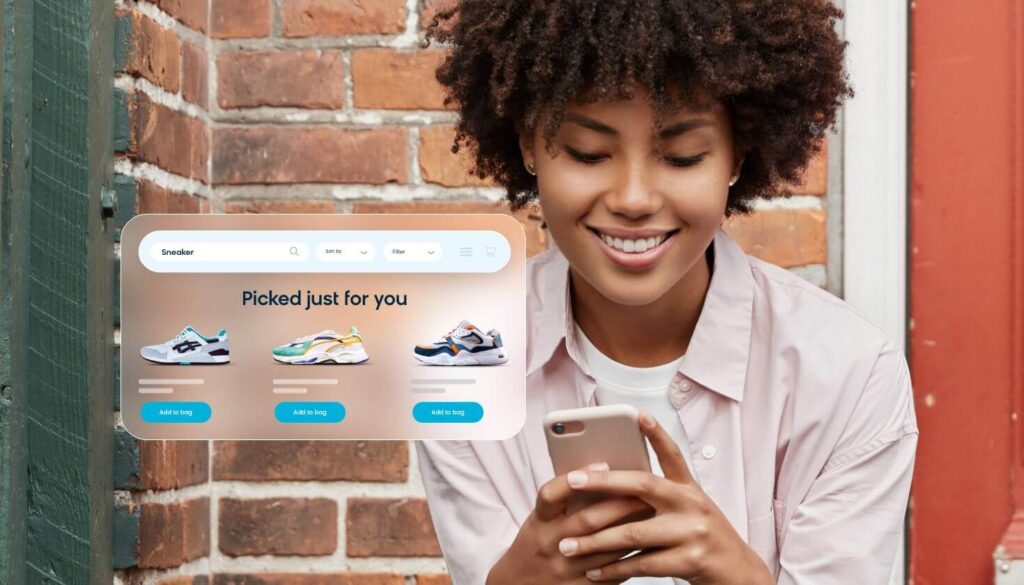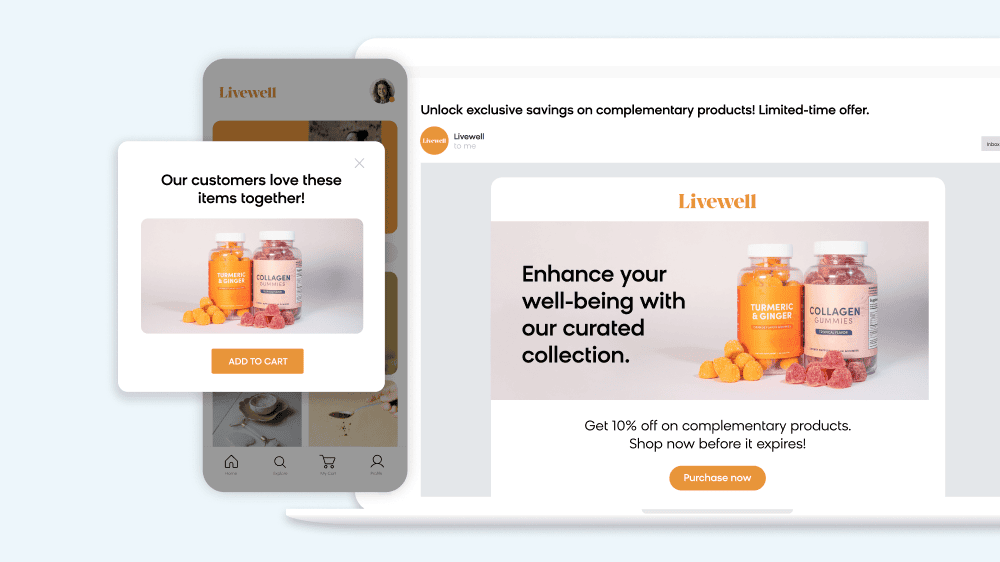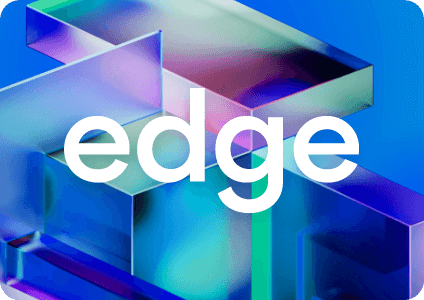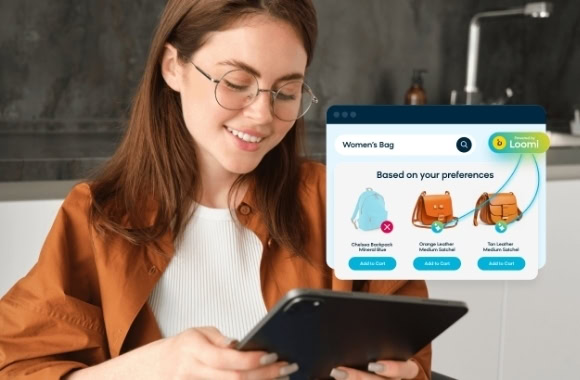Picture a customer visiting your store — trying on clothes, chatting with a salesperson, maybe even using your mobile website for a quick price check. Now imagine replicating that smooth, effortless experience across every digital touchpoint you have with your customers.
An omnichannel customer journey brings this idea to life. It’s all about creating a cohesive shopping experience that follows your customers wherever they go, ultimately leading to a sale.
Today’s shoppers want a seamless and personalized experience every time they interact with your brand, and they’re spending more with businesses that can provide it. An excellent brand impression will compel shoppers to spend 86% more. Provide just one negative encounter, though, and one-third of shoppers will walk away.
That may sound harsh, but the truth is that mapping and optimizing this journey is critical to meeting these customer expectations. By understanding how customers interact with your brand across different channels, you can create a more cohesive and frictionless experience that increases customer loyalty and boosts your bottom line.
Ready to ditch the disconnected shopping experience and create a journey that converts? We’ll guide you through the process, including a detailed seven-step approach to building your own omnichannel consumer journey.
What Is an Omnichannel Customer Journey?
An omnichannel customer journey includes all channels a customer uses to connect with your business, from initial awareness to post-purchase encounters. This includes your website, social media, email, mobile app, physical store, and more.
The omnichannel customer journey goes beyond simply offering multiple channels for interaction. It’s about creating a unified experience, where each channel complements the others and contributes to a cohesive narrative.
Suppose a customer is browsing for skincare on your website and they view a particular eye cream. They might then see a targeted ad for that same eye cream on social media later. The next day, they receive a personalized email with a discount code, prompting them to purchase the eye cream. This seamless flow of interactions across different channels — website, social media, and email — is a perfect omnichannel customer journey example.

For an experience to be this seamless, it has to be planned using an omnichannel customer journey map. This map is essentially a blueprint that tracks a customer’s touchpoints with your brand and helps you visualize this journey, so you can create a more engaging experience that also drives revenue.
If you’ve heard of multichannel marketing, you might be curious about the differences between multichannel and omnichannel approaches. Multichannel marketing prioritizes quantity, aiming to get your message across as many platforms as possible. This can be effective for brand awareness, but it can also breed confusion and possibly frustration for your shopper. For example, a customer might see a generic ad for athletic shoes on social media, followed by an email promoting baby clothes. This would definitely lead to a sense of disconnect.
Omnichannel consumer journeys, on the other hand, create a unified experience across all channels. This means tailoring messages based on customer behavior and preferences. You’ve seen this in action if you’ve ever looked at something online, hesitated to buy, and then later saw a targeted ad for the exact same item. It’s a simple and incredibly effective way to turn window shopping into a purchase.
Benefits of an Effective Omnichannel Customer Journey
Omnichannel marketing helps you smooth out the customer journey and prevent those dreaded cart abandonment blues. Here’s how:
Enhanced Customer Experience
Nowadays, the ideal shopping experience is personalized and frictionless. Consistent messaging, relevant recommendations, and seamless channel transitions are the building blocks of an effortless journey that fuels customer loyalty.
Compare this to the outdated approach of siloed channels, which only create disappointment. Have you ever browsed a shop online, only to visit the physical store and find a completely different set of products? This is the type of thing you’re trying to avoid.
Omnichannel marketing bridges this gap. By unifying your channels, you ensure consistent brand messaging and product information, no matter where your customer interacts with you. This promotes trust and makes it easier for them to find what they need, ultimately leading to higher conversion rates and happier customers.
Increased Customer Retention
The ecommerce landscape is growing fiercer by the day, with customer acquisition costs (CAC) soaring and knowing how to calculate LTV to CAC being more important than ever. Here’s where a stellar customer journey becomes your secret weapon. By crafting a positive and consistent experience across all platforms, you boost customer satisfaction and cultivate loyalty, which makes it easier to hang on to customers.
Customer retention is important for many reasons. First, maintaining customers is more cost-effective than finding and converting new ones. Acquiring one new customer can cost up to $150 for ecommerce brands, and this number continues to trend upward. Loyal customers are more likely to repeat purchases, try new products, and have a higher average order value. Your brand enjoys a predictable revenue stream with their help.
Loyal customers are also most likely to become your brand advocates. Brand advocates are a powerful tool in the digital age. They’ll sing your praises through positive reviews and word-of-mouth marketing. This free promotion builds trust and attracts new customers without any additional marketing spend on your behalf. It’s like using free advertising dollars to make more sales.
Improved Brand Perception
Omnichannel journeys aren’t just convenient for shoppers. They’re also your secret weapon for building brand credibility. When everything feels connected across websites, social media, and emails, this indicates that you care about your customers — something that your shoppers will remember the next time they want to do business with you.
Consider a customer abandoning their online cart due to a technical glitch. Other brands might lose their shopping cart, forcing them to start over. But with an omnichannel approach, shoppers can pick up right where they left off using your mobile app, which has all of their selected items saved to the cart.
The more you wow your customers with a smooth shopping journey like this one, the better they’ll feel about your brand. In a world where everyone has options, a seamless omnichannel journey makes your brand look awesome and leaves a smile on even the pickiest customer’s face.
Key Components of an Omnichannel Customer Journey
Crafting fantastic omnichannel journeys and customer experiences isn’t rocket science, but there’s a secret recipe to make them truly shine. Here are a few key ingredients you’ll need to whip up a customer journey omnichannel that’s smooth sailing from start to finish.
Consistency Across Channels
Have you ever walked into a store to find a completely different brand personality or pricing structure compared to their website? It’s a pretty disorienting feeling. This is exactly what happens when brands fail to maintain consistency across channels.
In an omnichannel approach, consistency is key. Your brand messaging, visuals, and offers should be uniform across all touchpoints, whether it’s your website, social media platforms, email marketing, physical stores, or mobile apps. This consistency builds trust and familiarity with your customers. No matter where they interact with your brand, they’ll know what to expect, which provides a sense of comfort and reliability.
Personalization
Personalization is the heart of a compelling omnichannel experience. Today’s customers are actively looking for brand interactions that are tailored to their individual needs and preferences. With omnichannel marketing, you can leverage customer data across all channels to personalize content, recommendations, and promotions. The end result is a customer base that feels understood and is more likely to engage with your brand.

For instance, a customer who has purchased running shoes might be interested in a new water bottle or a matching athletic top. By showcasing these personalized recommendations, your brand demonstrates that it understands your customer’s needs, building a connection that goes beyond a simple transaction. This makes your shopper more likely to appreciate the helpful recommendations and feel valued, which in turn encourages them to come back for more.
Integration of Technology
For a flawless omnichannel experience, you need a solid tech backbone. A customer relationship management (CRM) system fills this role for your sales funnel, storing customer data like purchase history, preferences, and past interactions. This unified view empowers you to get to know your customers on a deeper level, so you can tailor your marketing and keep things consistent across all channels. You can also use marketing automation to send targeted messages and automate tasks so your omnichannel journey runs smoothly.
Technology fueled by powerful AI can take this even further by automating and personalizing customer journeys at scale. If a customer abandons an online cart, this software might trigger a reminder email with their saved items and a personalized discount code, all designed to encourage them to complete their purchase.
7 Steps for Creating an Omnichannel Journey Map
If you want a customer journey that’s smoother than silk, you need to map it out. After all, creating a blueprint for your customer journey is the first step toward optimizing it. Fortunately, we’ve done the legwork for you with this seven-step guide to crafting your own omnichannel customer journey map.
Define Your Customer Personas
Successful omnichannel customer journey mapping starts with knowing your audience. Developing detailed personas is crucial. These personas, based on demographics, interests, and online behavior, help you understand how different customer segments interact with your brand.
Imagine you sell outdoor gear. One persona might be the “picky pathfinder” who is well-versed in outdoor sports and knows exactly what products and features they’re looking for. Another could be the “casual camper” who prioritizes ease of use above all else. By personalizing these encounters for each persona, you create a more relevant experience that drives conversions, no matter who your shopper is or where they are in the sales funnel.
Always keep in mind that customer personas go beyond data. By understanding their hobbies, challenges, and communication preferences, you build empathy with your shoppers and are better equipped to provide content and experiences that build stronger connections with them. This lays the groundwork needed for a truly successful omnichannel journey.
Identify Key Touchpoints
Before you can optimize the moments that drive sales, you need to identify them. Naming your key touchpoints is similar to mapping the customer’s entire brand experience. This goes beyond the typical online channels like your website, social media, email marketing, or mobile app. Omnichannel journeys encompass offline interactions as well, including physical stores, customer service encounters, and word-of-mouth recommendations.

Indirect touchpoints, like online reviews and influencer marketing, are also important. Even though your brand doesn’t directly control these things, they certainly play a role in your shoppers’ purchasing decisions. Over 99% of online customers read reviews before making a purchase, and nearly 60% of brick-and-mortar shoppers will read online reviews before checking out in-store.
By getting the full view of these encounters, you’re able to gain a deeper understanding of how customers interact with your brand at every stage of their journey. Armed with this knowledge, you can strategize how you’ll improve your processes and deliver a seamless, unified experience across all channels.
Gather Customer Data and Feedback
Data is the fuel that ignites a customer-centric omnichannel journey. Website analytics can reveal browsing patterns, purchase habits, and even content preferences, all of which come in handy when you’re improving your omnichannel journey. But if you want to understand the “why” behind the data, you’ll need to dig deeper.
Qualitative feedback in the form of customer surveys, interviews, and reviews offers a treasure trove of insights into the customer experience. These insights go beyond website clicks and open rates. They reveal frustrations with a checkout process or delight at exceptional customer service encounters.
By analyzing both quantitative and qualitative data, you can see the full picture of your customer journey. This 360-degree view empowers you to pinpoint pain points, prioritize improvements, and personalize the experience at every opportunity. The result is happier customers, fewer roadblocks to sales, and the ability to constantly adapt your approach for maximum impact.
Visualize the Current Customer Journey
Just like a picture is worth a thousand words, mapping your customer journey helps everyone see the big picture and the little details that can make a big difference. Flowcharts or customer journey canvases are valuable for plotting every stage of the adventure, from the initial spark of curiosity to the triumphant purchase and beyond.

This visual representation allows you to map out all the identified touchpoints, both online and offline. It tells you exactly how customers move between these moments — is it a smooth transition from browsing the website to visiting a physical store or are there points of friction along the way? By visualizing the journey, you can better understand how your sales funnel works in real life. This intel will help you improve it so it’s as effective as possible.
Identify Pain Points and Opportunities
Your omnichannel customer journey map, informed using data and visualization tools, is a treasure trove of insights. But the real magic happens when you analyze the map to identify pain points and opportunities.
Is the website navigation confusing? Are there gaps in communication between your email marketing and social media presence? Do physical stores lack proper signage or product information, hindering the in-person shopping experience? These pain points become opportunities to refine your omnichannel strategy, eliminating frustration and unlocking new possibilities for customer loyalty and sales growth along the way.
Develop an Optimized Omnichannel Strategy
Now, it’s time for the fun part: putting what you’ve observed about your current customer journey to work in an all-new omnichannel strategy. Using your customer journey map, get to work reimagining where shoppers’ pain points can become opportunities for improvement.
That blank page customers view after leaving a product review can turn into a “shop the look” page to encourage further sales. Website navigation can be simplified and streamlined and live chat can be incorporated to bridge the gap between online and offline brand interactions.

The beauty of creating your own omnichannel consumer journey is that it’s unique to your brand and customers. The key is to find solutions that ease their struggles and capitalize on what excites them. With a few strategic tweaks, you can transform their journey into a seamless experience that keeps them happy and fuels your business growth.
Implement, Test, and Refine
Your optimized omnichannel strategy isn’t set in stone. Implement it, but remember that you can (and should) change it when necessary. Once your new journey is live, keep a close eye on the numbers. Track quantitative data like website traffic, conversion rates, and social media engagement to see how your tweaks are landing.
Listen closely to your customers, too. Gather qualitative feedback by analyzing surveys, A/B testing elements, and product reviews. Doing this will tell you things that quantitative data might miss. Perhaps the new website navigation remains confusing or your personalized emails still aren’t hitting the mark.
By continuously testing different elements, incorporating feedback, and making improvements, you create a cycle of positive change. Think of it like an ongoing conversation with your customers — you listen to their needs and they respond to your improvements. This ongoing dialogue ensures your omnichannel journey is always firing on all cylinders for long-term growth.
Leveraging Omnichannel Journey Analytics
Keeping an eye on your analytics is the best way to understand how customers move through your journey. This intel becomes the fuel for ongoing tweaks, making sure your experience stays smooth and exciting, just like your customers like it.
Importance of Analytics
To be successful in ecommerce, you must understand your customers and how they move throughout your omnichannel journey. Analytics offer the best way to get up close and personal with your customer interactions, so you can more easily evaluate how well you’re moving your shoppers through the sales funnel, no matter what platform they are using.

This data helps you identify areas where your omnichannel strategy is working well and pinpoint those roadblocks that may discourage shoppers from making purchases. Consider these analytics your golden ticket to a smoother, more effective sales funnel.
Key Metrics to Track
Say goodbye to guesswork. By analyzing the right data, you gain a clear picture of how customers interact with your brand at every stage of their journey. Here are some key metrics to track:
- Traffic Sources: Knowing where your customers come from (like organic search, social media referrals, or influencer marketing campaigns) helps you understand which channels are driving the most traffic, so you can tailor your message for each platform.
- Engagement Metrics: Analyze website engagement metrics like time spent on specific pages, product interactions, and scroll depth to learn which content resonates with your audience and where they might encounter friction points. Similarly, track email open rates, click-through rates, and social media engagement to see how effectively you’re connecting with customers across channels.
- Conversion Rates: Track conversions at different stages of the journey, from adding items to the cart to completing a purchase, and across different devices, like desktop and mobile apps. This helps you identify areas for improvement, such as streamlining the checkout process or addressing cart abandonment issues.
- Customer Satisfaction: Keep an eye on customer feedback using surveys, reviews, and social media sentiment analysis. This qualitative data allows you to measure overall sentiment and identify areas where your omnichannel journeys and customer experience might be falling short.
Omnichannel Journey Mapping Is Made Easy With Bloomreach
What if every customer interaction could feel like a perfectly orchestrated performance? The right omnichannel customer journey can make it happen. By mapping your journey, you can identify opportunities to improve every touchpoint, creating a seamless and personalized experience that fosters customer loyalty and drives sales.
Ready to conduct your own customer experience masterpiece? You don’t have to go it alone. Bloomreach’s omnichannel orchestration is your conductor’s baton, empowering you to craft AI-driven journeys at scale. Request a personalized demo today and discover how we can streamline your omnichannel journey in minutes.













